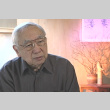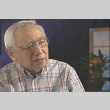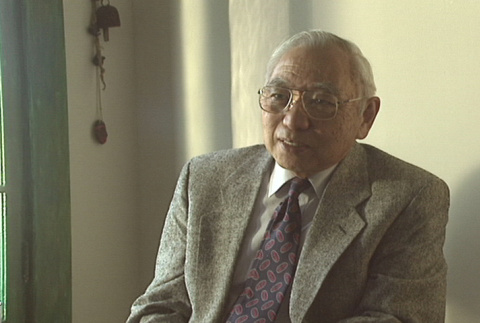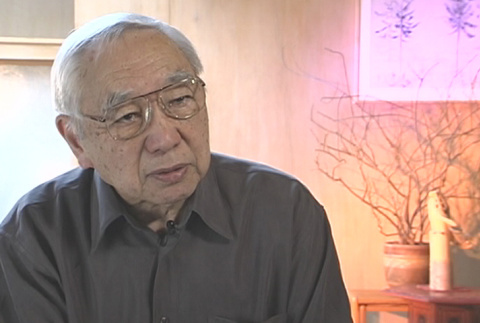Topics
Industry and employment -- Fishing and canneries (20)
Race and racism -- Discrimination (11)
World War II -- Mass removal ("evacuation") -- Japanese American community responses (10)
Identity and values -- Nisei (9)
World War II -- Administration -- Registration and the "loyalty questionnaire" (9)
World War II -- Concentration camps -- Facilities, services, and camp administration (6)
Industry and employment -- Small business (6)
World War II -- Leaving camp -- "Resettlement" (5)
Industry and employment -- Organized labor (5)
Community activities -- Associations and organizations -- The Japanese American Citizens League (5)
Identity and values -- Issei (5)
Community activities -- Associations and organizations (4)
World War II -- Concentration camps -- Conflicts, intimidation, and violence (4)
World War II -- Concentration camps -- Social and recreational activities (4)
Community activities -- Festivals, celebrations, and holidays (4)
Geographic communities -- Washington -- Seattle (4)
Race and racism -- Cross-racial relations (4)
World War II -- Concentration camps -- Education (4)
Immigration and citizenship -- Law and legislation -- Discriminatory laws (3)
Community activities -- Associations and organizations -- Economic associations (3)
Journalism and media -- Community publications (3)
Community activities -- Nihonmachi ("Japantowns") (3)
Geographic communities -- Washington (3)
Education -- Church-run schools (3)
Religion and churches -- Christianity (3)
Identity and values -- Family (3)
World War II -- Pearl Harbor and aftermath (3)
Identity and values -- Women (3)
World War II -- Resistance and dissidence -- Segregation and Tule Lake (3)
World War II -- Leaving camp -- Returning home (2)
Reflections on the past (2)
Japan -- Pre-World War II (2)
Japan -- Post-World War II (2)
World War II -- Mass removal ("evacuation") -- "Evacuation Day" (2)
Immigration and citizenship -- Life in Japan and reasons for leaving (2)
Community activities -- Sports (2)
Geographic communities -- California (2)
Geographic communities -- Illinois -- Chicago (2)
Religion and churches (2)
Community activities -- Recreational activities -- Picnics (2)
Education -- Japanese language schools (2)
Identity and values -- Sansei (2)
Education -- Higher education (2)
Immigration and citizenship -- Picture brides (2)
Religion and churches -- Buddhism (2)
Religion and churches -- Religious organizations (2)
World War II -- Concentration camps -- Funerals (2)
World War II -- Military service -- Women's Army Corps/Women's Army Auxiliary Corps (2)
Identity and values -- Kibei (2)
Community activities -- Associations and organizations -- YMCA/YWCA (2)
Geographic communities -- California -- Oakland (2)
Geographic communities -- Minnesota -- Minneapolis (2)
Identity and values -- Children (2)
Identity and values -- Elders (2)
Identity and values -- Parents (2)
Identity and values -- Youth (2)
World War II -- Non-incarcerated Japanese Americans -- "Voluntary evacuation" (2)
World War II -- Mass removal ("evacuation") (2)
World War II -- Temporary Assembly Centers (2)
World War II -- Concentration camps -- Living conditions (2)
World War II -- Concentration camps -- Holidays and festivals (2)
World War II -- Concentration camps -- Publications (2)
World War II -- Concentration camps -- Religion (2)
World War II -- Concentration camps -- Impact of incarceration (2)
World War II -- Support from the non-Japanese American community (2)
World War II -- Military service (2)
Activism and involvement (1)
Race and racism -- Stereotypes (1)
Community activities -- Associations and organizations -- Kenjinkai (1)
World War II -- Concentration camps -- Publications -- Tulean Dispatch (1)
Immigration and citizenship -- Anti-immigration sentiment (1)
Community activities -- Recreational activities (1)
Arts and literature -- Visual arts (1)
World War II -- Mass removal ("evacuation") -- Aftermath (1)
Community activities -- Associations and organizations -- Community and social service associations (1)
Redress and reparations -- Commission on Wartime Relocation and Internment of Civilians (CWRIC) -- Hearings -- Seattle, Washington hearings (1)
Community activities -- Associations and organizations -- Student clubs (1)
Community activities -- Associations and organizations -- Boy Scouts and Girl Scouts of America (1)
Activism and involvement -- Civil rights (1)
Arts and literature -- Performing arts (1)
Arts and literature -- Visual arts -- Photography (1)
Geographic communities -- Oregon (1)
Community activities -- Conventions and conferences (1)
Community activities -- Recreational activities -- Go (1)
Community activities -- Sports -- Baseball (1)
Education -- Public schools (1)
Community activities -- Sports -- Judo (1)
Community activities -- Sports -- Softball (1)
Community activities -- Sports -- Sumo (1)
Journalism and media -- Community publications -- Pacific Citizen (1)
World War II -- Japanese American Citizens League activities (1)
World War II -- Administration (1)
World War II -- Administration -- War Relocation Authority (WRA) (1)
World War II -- Concentration camps -- Conflicts, intimidation, and violence -- Manzanar riot/uprising (1)
World War II -- Propaganda -- Media propaganda (1)
Identity and values -- Japanese American identity (1)
Geographic communities -- Alaska (1)
Industry and employment (1)
World War II -- Pearl Harbor and aftermath -- Arrest, searches, and seizures (1)
Geographic communities -- Nevada (1)
World War II -- Pearl Harbor and aftermath -- Personal recollections (1)
World War II -- Temporary Assembly Centers -- Social relations (1)
World War II -- Temporary Assembly Centers -- Living conditions (1)
World War II -- Concentration camps -- Sports (1)
World War II -- "Enemy alien" classification (1)
Industry and employment -- Timber (1)
World War II -- Military service -- Military Intelligence Service (1)
Facilities
Tule Lake (19)
Puyallup (Camp Harmony) (4)
Granada (Amache) (2)
Heart Mountain (2)
Minidoka (2)
Pinedale (1)
Santa Anita (1)
Jerome (1)
Manzanar (1)
Format
Oral History (129)
Document (17)
Still Image (2)
Genre
Interviews (129)
Periodicals (6)
Miscellaneous Documents (3)
Books (2)
Manuscripts (2)
Photographs (2)
Programs (2)
Correspondence (1)
Ethnography (1)
Usage
DDR Creative Commons (140)
Copyright restricted (7)
Public domain (1)
Use <Ctrl> or (⌘) keys to select multiple terms



























